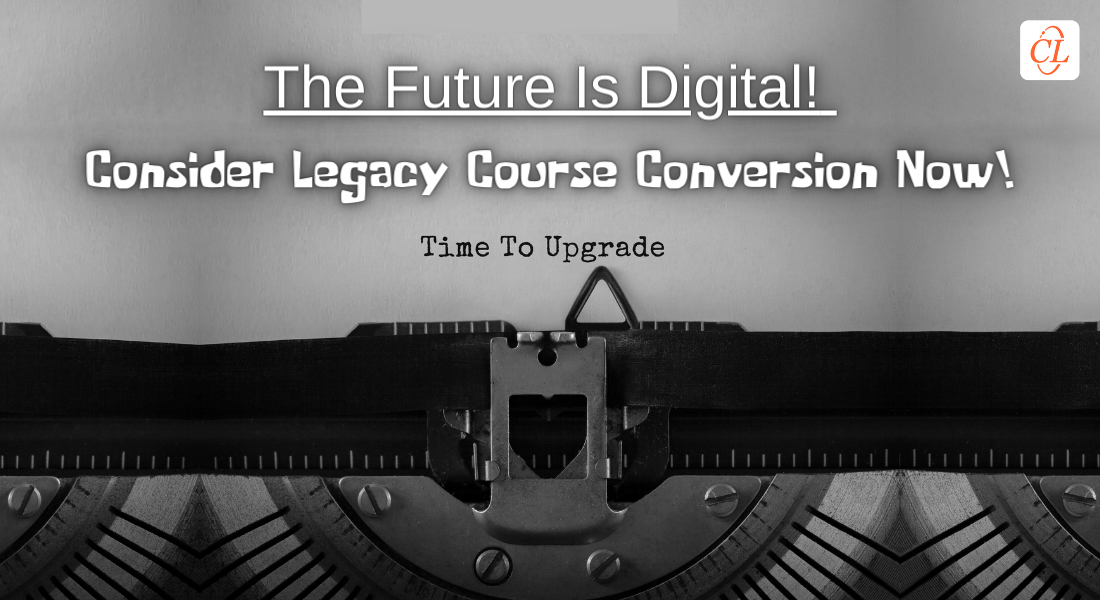ILT to VILT Conversion: 5 Best Practices to Guide You Through the Process

Are you planning to switch from classroom training to Virtual Instructor-led training (VILT)? It takes much more than merely uploading your PowerPoint presentation into an online classroom to successfully run a VILT session. Wondering what? Well, it involves redesigning the traditional instructor-led training (ILT) material according to the VILT classroom standards. At the same time, the instructor and learner guides must be updated to make the learning more appropriate for the VILT session. It is also important that the stakeholders involved in the ILT to VILT transition are given appropriate training so they can facilitate online training.
This is not all. There are certain best practices that should be followed for the successful conversion of ILT to VILT. This article will discuss them.
Transitioning from ILT to VILT?
Here are some best practices to follow –
- Ensure the Quality of the Content
- Plan the Design and Development of Supplementary Training Material
- Focus on Including Interactivities
- Use Technology Wisely
- Ensure Engagement Throughout the Course
But before discussing the best practices, let us discuss some of the most encouraging benefits of VILT.
The Benefits of VILT
Offers Flexibility
This is one of the most significant benefits of VILT. As this type of training involves replicating the traditional classroom environment in a virtual environment, it leaves more space for open enrolment. The employees need not take the class at the pre-decided time. They have the opportunity to enroll in the online training session based on their convenience, and that too from a remote location. Thus, VILT is more accessible and flexible to employees located in different places across the globe.
Saves Costs
VILT is cost-effective, and how? First, the online training can be delivered to the employees’ devices directly. So there is no need for a specific location or setup for the training. This cuts down on the cost required for infrastructure. Second, the learners can access the training from any given location. This way, the learners or the instructors don’t have to travel in the name of training. So, VILT is comparatively a cost-effective training solution.
Promotes Customized Learning
Another significant benefit of VILT is that the training can be tailored according to the employees’ roles and responsibilities. Personalized training, appropriate to their job role will make it more practical and the employees can apply the learning to their day-to-day job activities. Thus, it makes learning more impactful and boosts employees’ productivity.
Explore ways to make your virtual classroom more impactful
Now that you have a fair idea of the advantages of VILT training, you would want to know more about the implementation. And don’t worry if you already have a lot of ILT course materials, they can be converted to VILT. These best practices for ILT to VILT conversion will guide you further –
Best Practices for ILT to VILT Conversion
Ensure the Quality of the Content
Start with checking your existing ILT content. Do you find it too much to work on? Does the quality of the content match the standards of online learning mediums? If not, make sure it does. Try to break down the existing content and then work on repurposing it accordingly.
Plan the Design and Development of Supplementary Training Material
Deciding the right content for the VILT session is not all. Seamless execution of VILT sessions requires supplementary training material in the form of add-ons. Make a note of all the add-ons, and create a plan of action for the conversion. You should also support the VILT session, and develop support materials such as “How to Get Started” documents for the facilitators, reference materials, and documents that help come up with different ways to increase learners’ engagement. Plan on including a mock webinar to get good practice for the trainers.
Focus on Including Interactivities
Try to enhance what you already have i.e., the ILT content. Once you have the training content for the VILT session ready, you will have to think of different ways to make it more engaging to the learner. For instance, you can add chats or polls to engage learners during the session. You can also plan for collaboration activities like breakout rooms to promote peer-to-peer learning. While doing this, you should also make sure that your course content and the materials are aligned with the tool.
Use Technology Wisely
Remember that your employees would always recall a seamless overall learning experience for a long period and such an experience will also improve knowledge retention. Ensure that the course design and development team along with the trainers use technology in such a way that it brings a lot of advantages to all the stakeholders involved including better learner engagement, a flexible learning environment, etc.

Enhance Engagement Throughout the Course
Even if the Instructional Designers (IDs), facilitators, and other team members involved put their all into developing an impactful VILT session, it will all go waste if your employees get distracted during the course. You will have to consider two things when trying to work in virtual classrooms – online fatigue is very real, and your learners have several distractions when being trained in a virtual medium. So try to enhance engagement throughout the VILT session.
One way to cut down on distractions is by asking the learners not to browse the websites during the course. At the same time, it is also a good practice to ask the employees to put their phones on silent throughout the training session. Make sure that the VILT sessions have more breaks, unlike the traditional ILT session. The learning developers need to put a strong emphasis on promoting participation and plan regular breaks while formulating engagement activities for the session. The use of interactivities such as breakout rooms, reactions, or polls can keep the learners engaged.
Summing It Up
Virtual instructor-led training is ideal for providing scalable training for larger training groups, especially when the teams are geographically dispersed. The successful implementation helps save costs, time as well as effort and can boost your training ROI. Hope the best practices discussed in the article helps you with hassle-free ILT to VILT conversion implementation.
Eager to know more? This webinar recording will help you dive deep into the nitty-gritty of the conversion process and share some impactful tips that will make your virtual classrooms more impactful.
Editor’s note: This post was originally published in December 2022 and has been updated for comprehensiveness.





